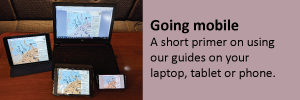Hidden in Booker Lagoon

A bear on the beach. Silence, but for a few tweets. The bird kind.
Just a few days ago we were discussing our 2021 cruising plans, now in their seventh, maybe eighth, pandemic-inspired iteration. We are almost for sure returning to the Broughtons, and almost for sure tackling the installation of a water pump and spray hose to clean our anchor. Almost for surely.The bear picked at a rock, nuzzled the sand around it. Looked at us.
So our minds went to an ideal spot in the Broughtons to get away from it all and bring a boat project with us. Peace. Quiet. Protection. Perfect, as long as you don’t need shore power or to run errands to find electrical bits and such.
A river otter spins on the spot in the water. A seagull lands nearby, hoping to dine on the flung bits.
Booker Lagoon. Wonderful for all of the above, as well as procrastination, allowing for tooling about on beaches and around rocks when a boat project, real or imagined, loses its immediate appeal. Of course, the project will always be there. Waiting.
Entering the lagoon through narrow Booker Passage is best at slack water. Flows can exceed seven knots. Outside the lagoon is Cullen Harbour, itself a pristine anchorage with excellent protection from prevailing winds. It is an excellent spot to await favourable tidal conditions to enter Booker Lagoon.

Cullen Harbour is near a central crossroads in the Broughton Archipelago, a short detour from most routes criss-crossing the region. Once tucked inside the Cullen Harbour anchorage, there is typically lots of room to drop a hook. Hop in your dinghy or kayak to explore the surrounding islets.
There is good depth in Booker Passage, so it can be transited at high slack or low, but it is narrow, not really wide enough to allow large vessels to safely pass. Typically, etiquette suggests taking the passage with a favourable flow, just before or just after the turn of tide.

Pause in the small bight on the Cullen Harbour side of the passage. From here you can clearly see the passage and confirm the channel is clear of other vessels before entering. Slack water is very brief. Many boaters announce their intentions on VHF16.
Keep to the centre of the pass. At low slack, at the western end of the channel slightly favour the shore of islet identified on charts as 56 Metres.

Booker Lagoon looks on a chart like an ink blot, with fingers of water exploding from the centre. At the fingertips, the bays offer good, protected anchorage. As depicted on older charts, each of the bays was once home to aquaculture operations. While these have been closed, opening the bays to anchorage, debris of net, rope and floats has been left behind. It is a wise mariner who ties a trip line and float to their anchor to assist in recovery if their hook snags on discarded detritus.
Our favourite anchorage is off the northwest shore of the lagoon, with good protection from prevailing winds and a nosy neighbour’s view of all comings and goings.

Nearby is a pretty cove surrounded by tiny islets with a soft-sand beach and a tiny cabin with a quaint biffy in the woods. Fun to explore and to wonder about the lonely thoughts of the person who lived there.
Booker Lagoon is along the southern shore of the Great Bear Rainforest, and the lagoon does its part to live up to the evocative name at low tide when bears come down to the beaches to look for food.
And that is when boaters often decide the time is right to return to the boat to get back to those projects.
Learn more about our cruising guides to the Salish Sea and beyond.



















We spent four days in the upper arm – happy, calm and quiet. It was not until we pulled out and headed for our next destination that we found that we’d missed a significant blow – actually did damage to a number of the small marinas. We never heard a peep. Great place to visit. DO radio your intentions before entering the passage – it’s one boat wide at best.